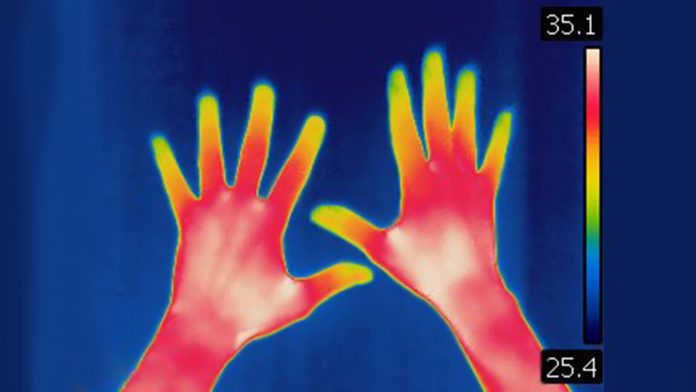
A new study has found that portable thermal imaging cameras may improve hand hygiene in health care professionals.
The pilot study, which was published in the American Journal of Infection Control (AJIC) has proposed a new approach to assessing and improving hand hygiene practices in hospitals.
“Effective hand hygiene is recognised as the single most important act to prevent the transmission of potentially pathogenic microbes in the healthcare setting, but there is no widely adopted method for assessing the effectiveness of healthcare professionals’ hand hygiene technique,” explained John Boyce, MD, a private consultant at J.M. Boyce Consulting, and a study author.
“Our study shows that thermal imaging shows promise as an approach that warrants additional research to determine if it can be used for routine monitoring of hand hygiene technique to improve patient care.”
Hand hygiene needs to be monitored in hospitals
Both the Centers for Disease Control and Prevention (CDC) and the World Health Organization (WHO) recommend the use of alcohol-based hands (ABHS) in their hand hygiene guidelines. ABHS can be unreliable as application techniques can impact its antimicrobial effectiveness. Several studies have found that healthcare professionals regularly fail to apply ABHS to their thumbs and fingertips.
Dr Boyce and his colleague, Richard A. Martinello, MD, wanted to explore whether thermal imaging with a portable infrared camera could improve hand hygiene in the health sector. Boyce and Martinello suggested that using the thermal imaging camera to regularly test whether ABHS had been applied properly by could encourage better application.
The researchers obtained thermal images of 12 healthcare professionals using an infrared camera attached to an iPhone. They recorded baseline readings from the mid-palm area, the tips of the third finger and the thumb. The participants were tested immediately after their hands felt dry, and then one and two minutes later. This was repeated at multiple points during the study.
Thermal imaging successfully detected poor application
The images revealed a significant decrease in the finger, thumb and mid-palm temperatures after the participants performed their hand hygiene routine. This confirmed that the infrared camera could detect colour changes that show drops in temperature.
The researchers also found that when healthcare professionals performed their hand hygiene routine with ABHS without including their thumbs, a lack of colourimetric change was detected by the thermal imaging camera.
One participant with particularly large hands did not record decreased temperatures in the palm, finger, or thumb after applying ABHS, suggesting that the thermal imaging could help measure the correct amount of ABHS needed per individual for adequate hand hygiene.
“The findings from this pilot study are exciting because they are the first to evaluate a new tool that might help infection preventionists assess the quality of hand hygiene techniques during educational sessions, periodic competency evaluations, and routine patient care,” said Linda Dickey, Director for Quality, Patient Safety and Infection Prevention at UCI Health in Orange County, California.










